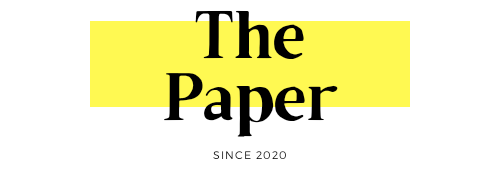English, strictly speaking, is not my first language by the way. I haven’t yet discovered what my first language is so for the time being I use English words in order to say things. I expect I will always have to do it that way; regrettably I don’t think my first language can be written down at all. I’m not sure it can be made external you see. I think it has to stay where it is: simmering in the elastic gloom betwixt my flickering organs.1
Holly Márie Parnell’s film Cabbage (2023) demonstrates the limitations of language—or, rather, of a certain type of language. In one of the opening scenes, her mother, June, is surrounded by folders upon folders of medical records, letters and x-rays pertaining to her son David. These documents tell a story but, as Cabbage attests, not the story of David. They tell a story of ableism, economic downturn, austerity and medicalisation. David does not exist in this language. In another scene, June attempts to condense, distil and squash her son’s everyday life into the rigid structure of a bureaucratic ‘care’ form. Care means, in this particularly removed context, a cold government system rather than a verb, a practice, a kindness. Here, David and his family encounter time and time again the limits of language.
Language, however, Parnell shows us, is a flexible thing. To quote John Berger, ‘a spoken language is a body, a living creature whose physiognomy is verbal and whose functions are linguistic. And this creature’s home is the inarticulate as well as the articulate’.2 The film’s title—Cabbage—refers to a cruel comment made by a doctor who condemned David to a life identical to that of a cabbage, which follows the dominant, stererotypical ‘vegetable’ metaphor employed to characterise people with certain (dis)abilities.
David is a non-verbal, non-mobile person who, in recent years, has been writing poetry and taking photographs with the assistance of eye-gaze control technology. Parnell and David use the word ‘cabbage’ to speak to the ridiculousness of this diagnosis. Here, Cabbage is used to mean ‘you were wrong’ and expresses the meaningful life that David lives.
Language is overflowing with potentiality and multiplicity of meaning. Yve Lomax takes the word ‘tree’ as an example. We all know what a tree looks like—and, yet, your imagined tree is different to mine. In fact, there can be no one standard tree. Thus, the word ‘tree’ does not establish what a tree is but rather is a placeholder for the potential of trees. This thought experiment is not an attempt to obscure something basic like the word ‘tree’ and create a navel-gazing reality warp —this distinction is important and hopeful for language. Lomax, herself, is joyous: ‘To not be indifferent to actuality gaining primacy over potentiality is to hold dear to myself that there are possibilities other than what we are told is possible.’3
So, here is another world—the rich world of Holly Márie Parnell’s visual language. In a review of Cabbage, Gabrielle de la Puente described the medium of film as ‘an open, editable object’.4 Parnell’s world certainly feels open, vast, immense. The camera meditates on lush nature scenes: long grass swaying, birds soaring, her mother squatting against the horizon collecting seaweed. Parnell’s touch is light, poetic and enrapturing. At times, the camera is positioned from David’s point of view, and we see imagery rich with colour—there is green, there are pinks, there is light. Here is a big world—an alternate world to the one documented in June’s archive of medical records.
Interspersed and collaged together with these brilliant landscapes is David’s writing. His manipulation of repetition—‘I want to ask a question’ appears against a black frame throughout the film—cleverly demonstrates language as a construction. David subverts the supposed ‘exactitude’ and ‘reality’ of written language by signalling the thought and expression behind this form of communication and the thoughts and expressions that fall entirely beyond it. Walter Benjamin explains the complexities of human language; ‘every expression of human mental life can be understood as a kind of language… all communication of mental meanings is language, communication in words being only a particular case of human language’.5
During a recent artist talk, Parnell expressed exasperation at the change in treatment David has received since he can ‘speak’—for example, he is consulted more by medical staff. His humanity is seemingly more apparent now, even though he could communicate long before being presented with access to the written word.
It is encouraging to think of how Parnell progresses in her visual language, how David continues to experiment and play with the written word, and how much more they can expand the potential of language and, thus, of being. This is the true beauty of Cabbage.
1. Claire Louise Bennett, Pond (London: Fitzcarraldo Editions, 2015), p. 44-45 2 John Berger, Confabulations (London: Penguin Books, 2016), p. 5
2. John Berger, Confabulations (London: Penguin Books, 2016), p. 5
3. Yve Lomax, Passionate Being: Language Singularity and Perseverance (London: I.B Tauris, 2009) p. 83
4. ‘come to a film festival with me’, The White Pube, Youtube, 19 March 2023. https://www.youtube.com/watch?v=4RKEkvesOYs&t=1205s [Accessed on 30 March 2023]
5. Walter Benjamin, ‘On Language as such and on The Language of Man’, Reflections; Essays, Aphorisms, Autobiographical Writing (New York: Shocken books, 2007) pp. 314-332, p.314
Sarah Long
